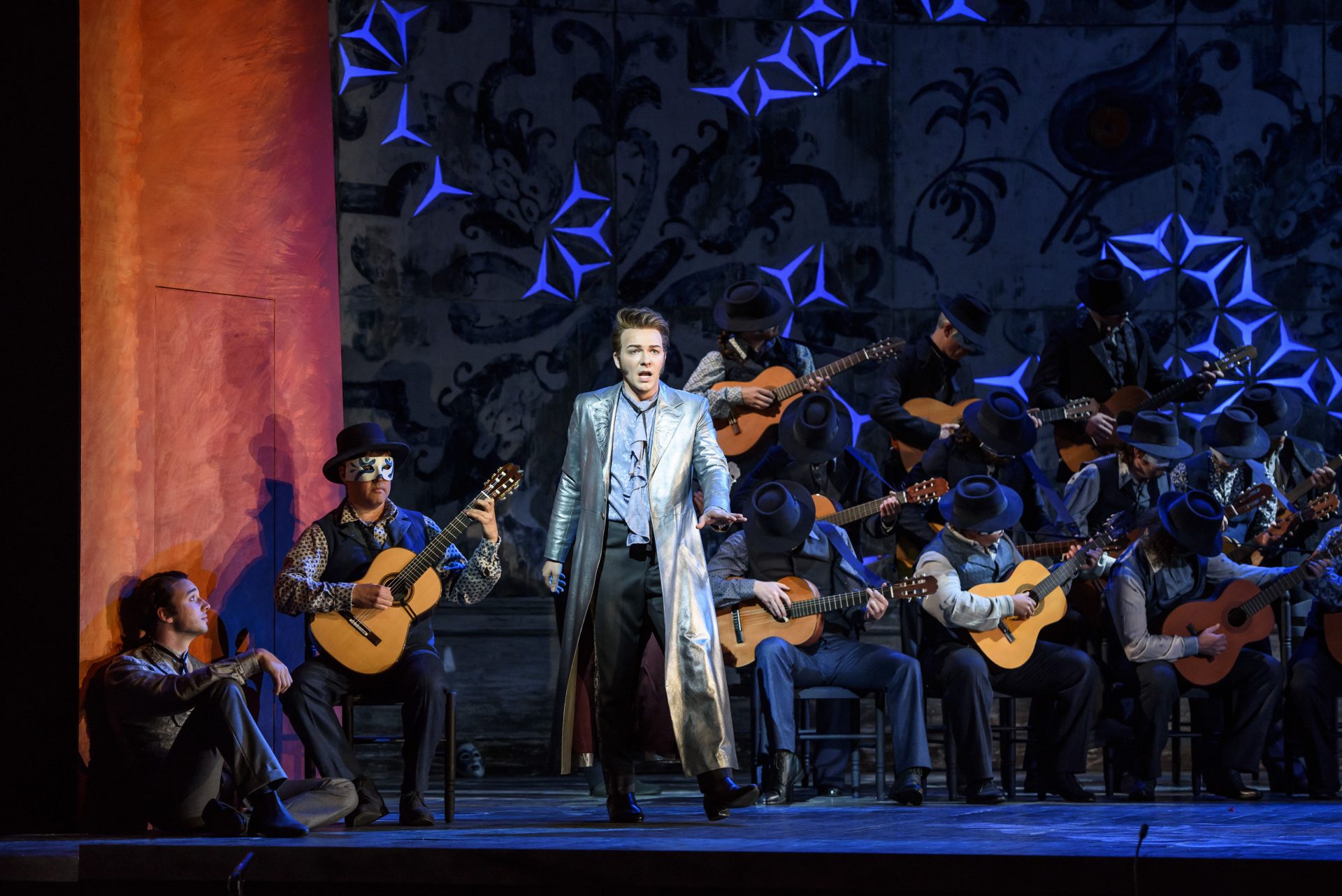
Music in opera
Explore the different voice types of opera singers and find out more about the role of the conductor.
Singers
How do singers warm up their voices?
International soprano Danielle de Niese talks about techniques she often uses to warm up her voice and prepare herself for tackling challenging notes on stage at Glyndebourne and around the world.
She’s clear that, when doing these exercises, she doesn’t feel pressure to sound perfect. Her focus for these warm-up exercises are instead to warm up her instrument and she compares this to warming up a body as an athlete.
The conductor

What does the conductor do?
Learns the work from the score, with other musical background/context and research of performance history
Talks with the director about the style and concept of the production
Studies the production design and sets
Rehearses with principals, chorus and piano in director-led sessions on set in the studio and then on stage with piano through to piano dress rehearsal
Separate rehearsals with orchestra only (no singers) at the latter stages
Stage rehearsals with full company and orchestra to musically and dramatically coordinate the production and balance between stage and orchestra pit
Conduct the premiere and performance run, keeping the production and interpretation fresh, energised and flexible through to the final performance




















